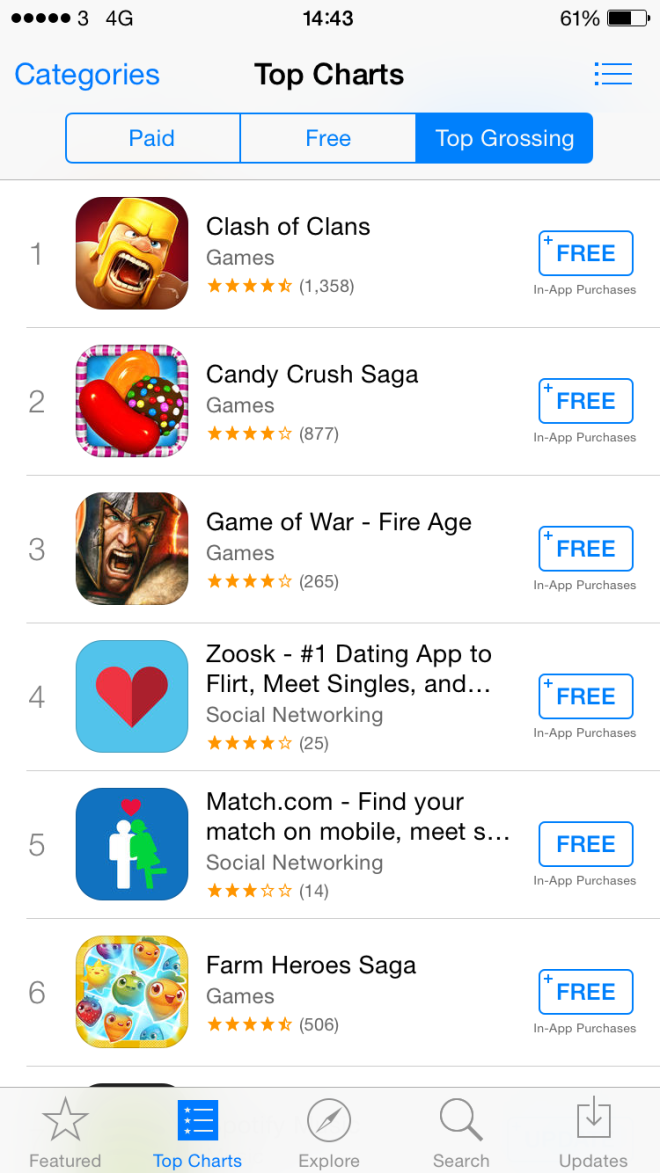In our latest report, App Economy Forecasts 2015 – 2017, we estimate the number of mobile ecosystem in 2014 at 5.5 million developers. Demand for mobile development skills has never been higher and yet revenue from app store sales cannot possibly pay their salaries. Luckily they don’t have to as developers aren’t all building apps full time and there are several other revenue sources in the app economy, some of them comparable with or even significantly larger than the app stores.

Estimating the developer population
Counting mobile developers is hard. A lot of software developers look into mobile platforms and a lot of people are curious enough about how they’d make an app for their phones that they’ll try to find out. We can’t meaningfully count all of these as mobile developers. However, we also know from our Developer Economics surveys that a huge percentage of developers creating the apps that fill the app stores are not full-time professionals. Popular programming Q&A site StackOverflow has around 35 million unique visitors and it is only an English speaking community. That probably includes a lot of students trying to get help with their coursework. Meanwhile bottom up estimates for the global professional developer population based on job classification data from multiple sources are just under 20 million. This is highly error-prone due to the way developers are classified along with other IT professionals in many places around the world. How many of those are really building mobile apps anyway? Apple has over 9 million developers registered on their developer portal. Some of those are for Mac and Safari but the majority are iOS developers. Then again, the number of developer accounts with any apps published on the App Store for iOS is only around 350,000. Google Play has fewer active publishers than iOS. The truth must lie somewhere between these extremes.
For the purposes of our estimate we decided to count developers who are actively building, or planning to build in the very near future, publishable apps for a mobile platform. Students building toy apps to learn and hobbyists who only build things for themselves aren’t taken into account. Those people could join the ranks of mobile developers in the near future but they aren’t doing anything to satisfy mobile app demand yet. 5.5 million is the number of developers required to maintain all of the published apps that have been updated in the last 12 months, plus build all of the new ones released in the same period. In our report we also forecast the number of new and updated apps going forward and the number of developers required to sustain that app growth through 2017.
Keeping the pizza and coffee flowing
Developers are in high demand and as employees in the US they will typically earn upwards of $100k per year with relatively little experience. Proven talent in Silicon Valley can easily earn 50-100% more. Salaries in Western Europe are not quite as eye-catching but not that far behind either. In countries where the cost of living is much lower, developer salaries are obviously more modest but actually often a greater multiple of the national average wage.
Why would anyone with such earning potential build and sell apps that are likely to produce a poor return on their time. There are several answers:
- Some apps make fantastic returns and some developers believe, or at least hope, they could emulate those and use their skills to make a small fortune
- Other developers are trying to build small but sustainable businesses on the app stores, targeting niches and working as artists and entrepreneurs
- Some developers build their own apps as proof of their abilities in order to sell their skills for a higher rate on contract development work
- Many developers just love to code and already earn a full time salary in their day job, they build apps as side projects or for a hobby, either for fun, a little extra income or to sharpen their skills for their next career move
- Some developers are purely learning and having fun, usually either at the beginning of their careers and in some cases after they’ve retired.
Note that only the first two of these are depending on the apps for income. Of course not all developers are trying to make a return from apps via paid downloads or in-app purchases. Advertising is also a big source of revenue in the app economy, although most of it goes to a few giant corporations. The typical developer monetising through ads does much worse than those using in-app purchases, so that’s not the answer. However, there are other models where developers have better odds of making money. Subscriptions are the fastest growing revenue opportunity according to our forecasts, although for pure Software as a Service rather than content subscriptions that will mostly be selling to enterprises. The biggest revenue opportunity of all in app economy over the next few years is definitely not in pure software businesses. Indeed, it’s the rather old-fashioned business of selling real physical things! Find out just how big it is by purchasing our latest report.









 Freemium still has a large share of the market, but it’s unlikely to make you rich.
Freemium still has a large share of the market, but it’s unlikely to make you rich.